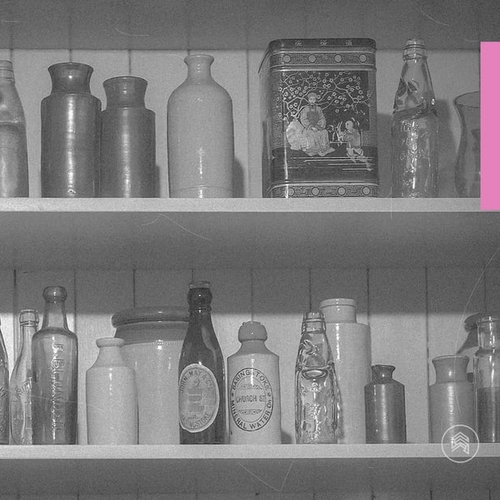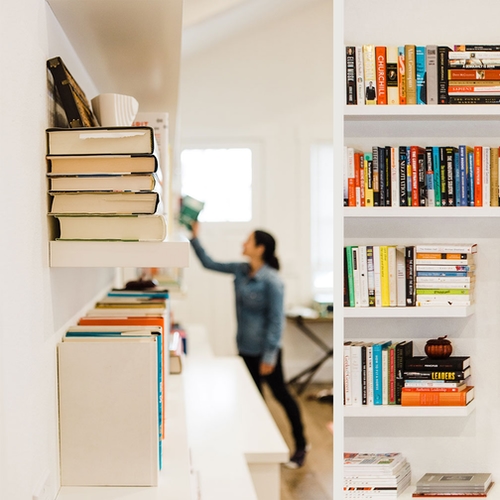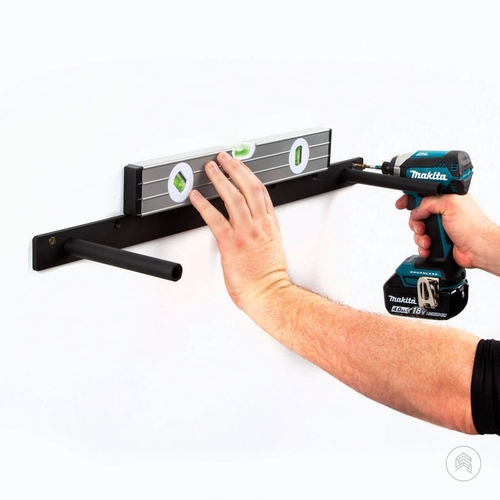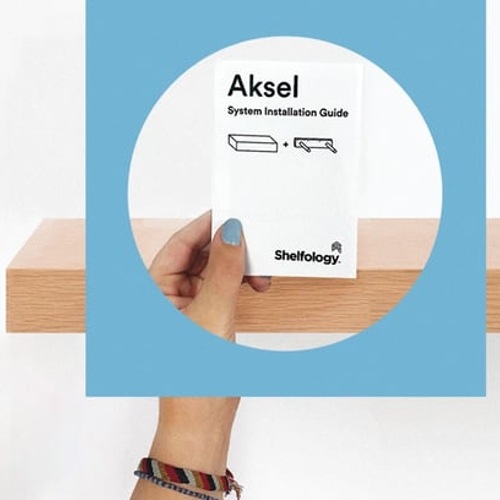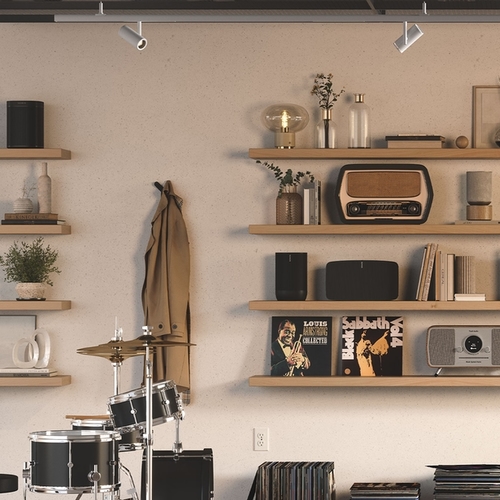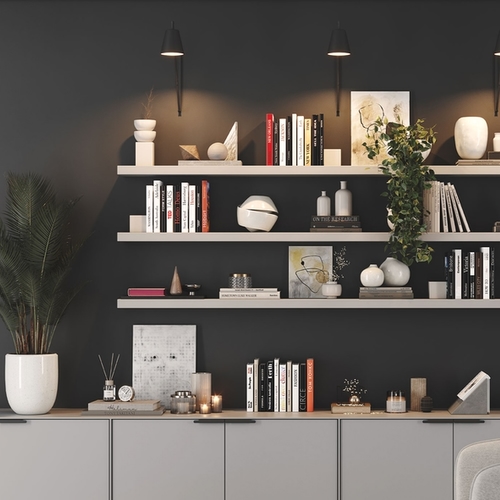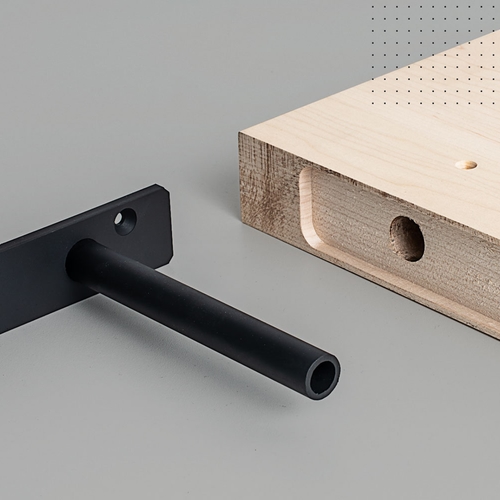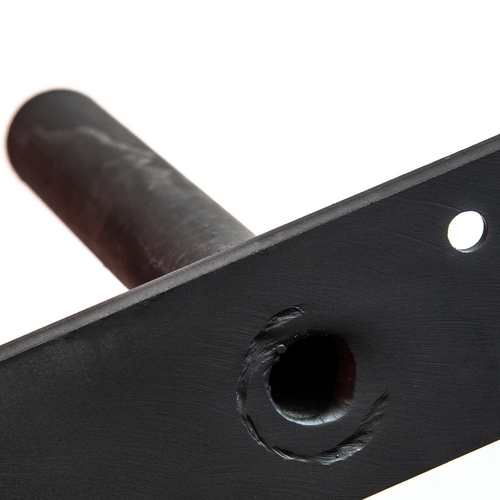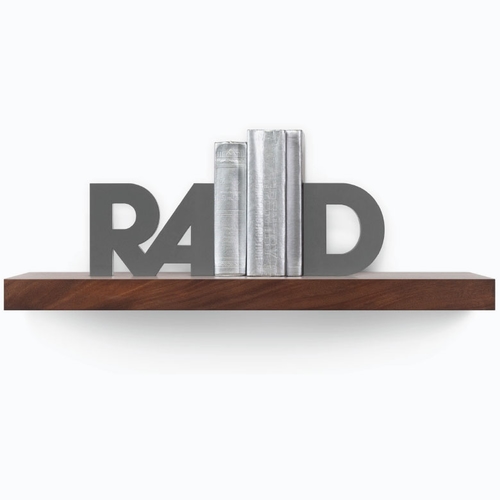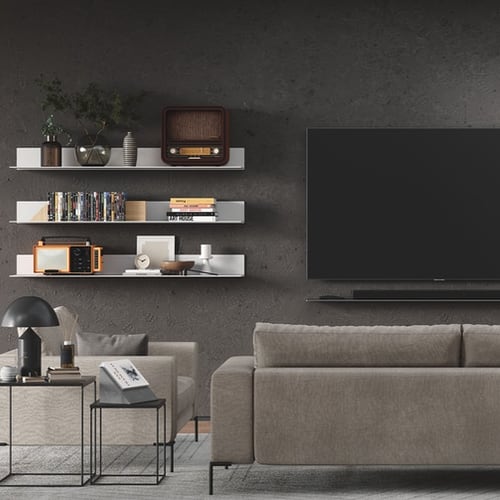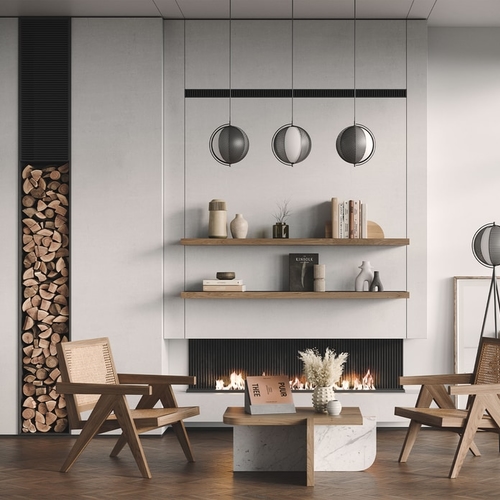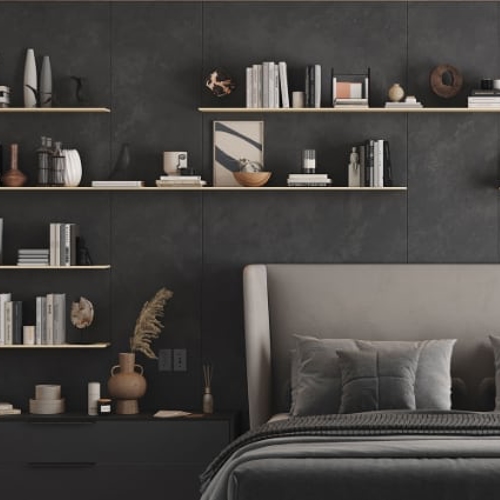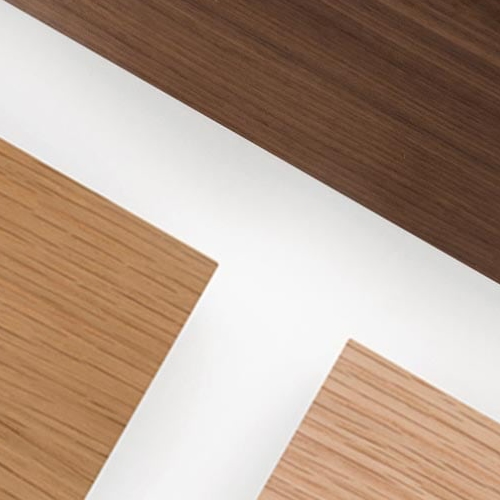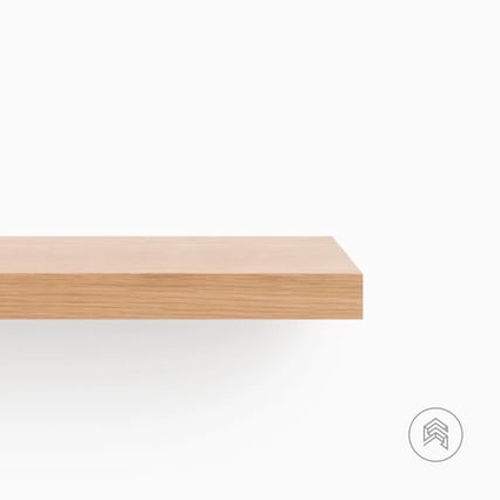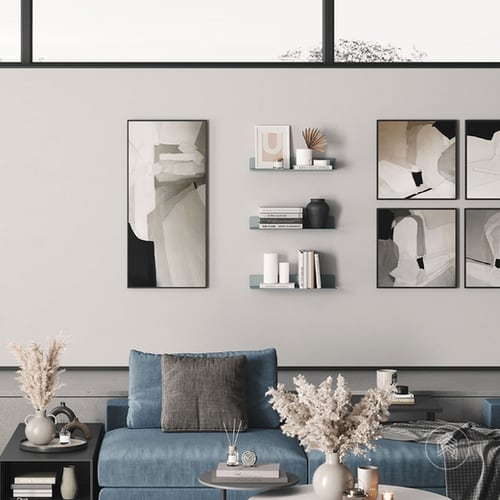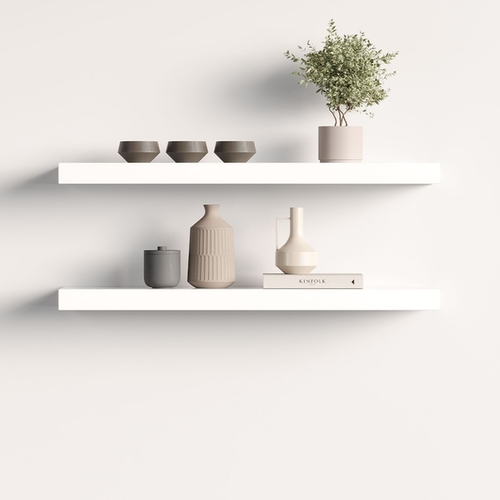Shopping for floating shelves can be tough. Selecting the right floating shelf DIY floating shelf bracket and properly installing it might seem like a daunting task. But have no fear: your friendly neighborhood Shelfologists to the rescue! We’ve taken the time to answer just about every question anyone has ever asked (or Googled!) about Floating Shelves. Think of this as your one-stop resource for all things “floating shelves”. Float on!
Jump to a topic:
- Floating Shelf 101: The Basics
- A Technical Guide to Floating Shelves: Questions about Floating Shelf Installation, Weight Capacity, Tools and Materials
- Floating Shelf Style Guide: Tips for Styling and Decorating Floating Shelves
Floating Shelf 101: The Basics
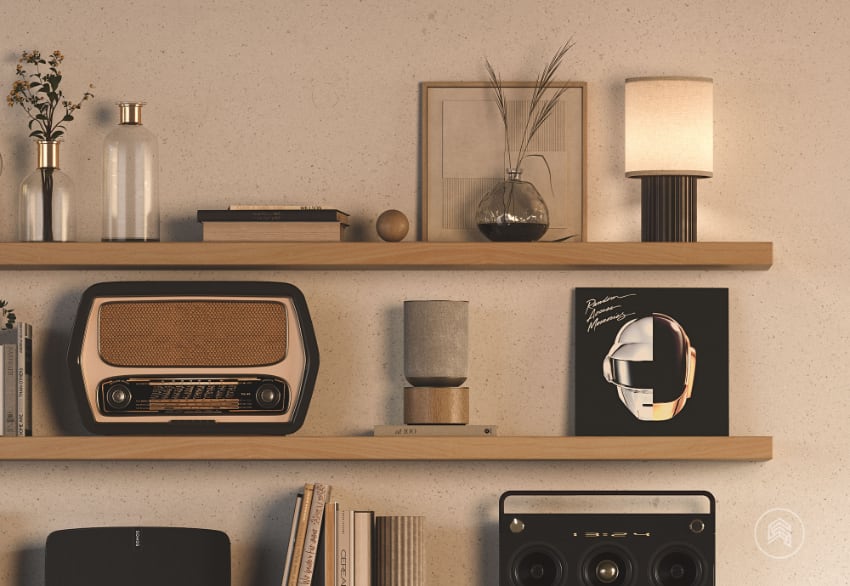
What is a Floating Shelf?
A floating shelf is a shelf that is attached to a wall with concealed mounting hardware (a floating shelf bracket), leaving little-or-no visible means of support. The result: beautiful, minimal storage that seemingly levitates in thin air.
How are floating shelves secured to floating shelf brackets?
There are two options to use when securing your shelf to the floating shelf bracket. First, you can drill a hole through the shelf down into the support rod and secure them together with what we like to call a “set screw.” All of our Aksel systems come with this already done for you, but if you are purchasing a floating shelf system elsewhere, you could easily do it yourself. Securing the shelf to the support rods is the preferred method, as this allows you to undo the set screw, remove the shelf, and move the whole system in the future. Easy peasy.
The second option is to secure the shelf to the support rods with an adhesive. We always recommend a semi-permanent fix like a kitchen and bath silicone. This will hold the shelf hardware and wood together, but will also allow you to wiggle the shelf off of the support rods should you ever wish to remove it. Some contractors and builders prefer a permanent adhesive instead. Just be sure not to overfill the holes in the shelf—a little goes a long way!
A Technical Guide to Floating Shelves: Questions about Floating Shelf Installation, Weight Capacity, Tools and Materials
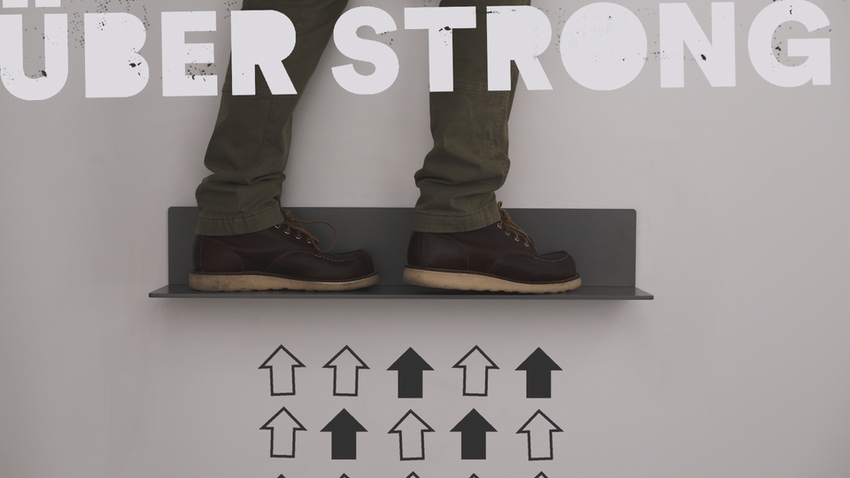
How much weight can a floating shelf hold?
The short answer: a lot of weight—if it is done right. A floating shelf can hold 45–50 lbs for every wall stud that your floating shelf bracket is attached to. The more detailed answer depends on a number of factors, including 1) where and how the shelf is installed, 2) the quality & design of the shelf and bracket, and 3) the dimensions (length x depth) of the floating shelf.
How do you install floating shelves?
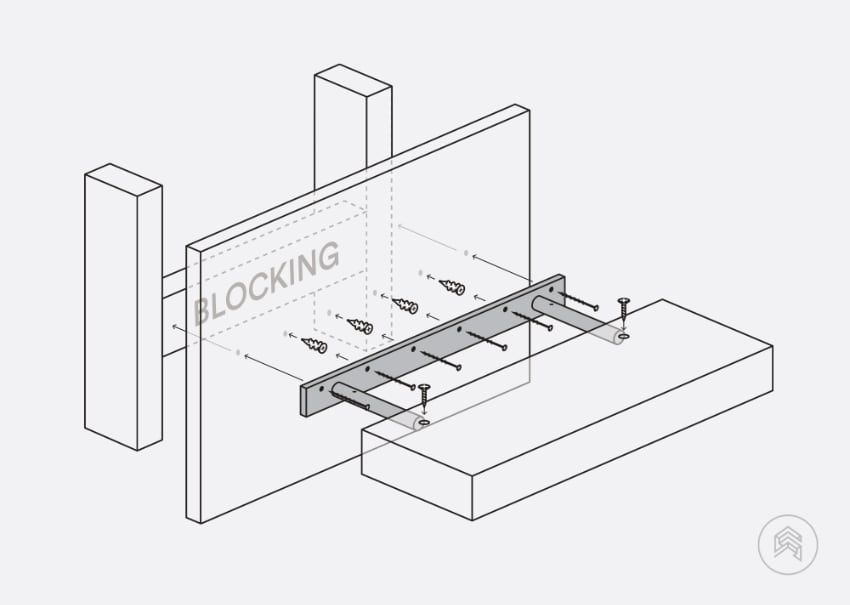
Our floating shelves are heavy-duty. As such, never use just wall anchors as they will be levered right out of the wall by the weight of the shelf. At a bare minimum, ALWAYS install floating shelf brackets into at least one wall stud. However, we HIGHLY recommend attaching to 2 or more studs. The best practice is to install your shelf into wall blocking… which might require help from a pro. Once your bracket is installed, slide on and attach your floating shelf. Viola!
Can a floating shelf be installed on drywall or plaster?
Yes! This is the easiest and most common type of installation. The key is to locate the studs behind the wall. Use a stud finder, nail, or thin drill bit to find the studs behind your shelf. Mount the floating shelf bracket/hardware into each stud and use drywall anchors in every other available hole.
How Do I Find Wall Studs Behind Plaster?
Finding studs isn’t rocket science. Before you go punching holes in the wall, there are some easy hacks for finding the studs. First, the easiest and, honestly, most effective way is to head to Home Depot and buy a stud finder. Done and dusted!
Alternatively, you could go old school and just use “the knock test”: start at light switches, outlets, or electrical boxes (they are typically installed on a stud). Gently knock on the wall listening for a change in density. Also, there are studs on either side of most windows. Another trusty method is to measure 16 inches from a corner and start knocking. If you need help, feel free to call one of our friendly installation support monkeys and they can try to walk you through it over the phone.
Do floating shelf brackets need to be installed into wall studs?
Yes. Studs are 100% critical to supporting a floating shelf, floating mantel or floating desk. If you just fasten a floating shelf to the wall without hitting any studs, you will end up with a lot of drywall holes and a damaged shelf on the floor. Drywall anchors have nowhere near the strength you need to support a shelf. So screw into at least two studs, then install drywall anchors into every other available hole.
If the holes in the bracket don’t line up with the studs in the walls (because of the unique construction of the wall), it is absolutely okay to drill a hole through the bracket back bar so you can hit a stud. In fact, we recommend that you attach into every stud your bracket crosses. If you use every secure attachment opportunity, you’ll get the best results.
Wanna 10x your shelf strength? Try blocking. Blocking is the practice of placing horizontal wood pieces spanning between studs. If you place blocking behind your shelf, each hole in the bracket can be screwed into solid hardwood. EVERY. HOLE. IN. THE. BRACKET…. INSANE!!! I don’t mean to yell, but this method is BY FAR, the strongest way to install a floating shelf or floating mantel.

What if I have a small shelf that I want to place where there are no studs?
Although we don’t recommend it, it may happen that the sweet spot you’ve been dreaming of placing your floating shelf just happens to be between two studs. These would likely only occur if the shelf or bracket you use is around 10 inches.
In this case, we would simply suggest that you install your shelf using ALL of the included wall anchors. But remember, this particular shelf will not be as strong as if you had it installed into a stud. Forget about placing your beloved bowling ball collection on it.
Can I hang a floating shelf with Command Strips?
Bless those geniuses at 3M, but the answer is a resounding “No! Please no! Nyet. Nein. NO WAY.” Save Command Strips for small framed pictures, birthday signs, and little Timmy’s kindergarten artwork. MAYBE a picture ledge. We’re not in the business of destroying the things we’ve made, and we’re sure you want the shelf to stay up on the wall, right? Enough said.
Why is my floating shelf sagging? Or tilting? Or leaning?
Great question! Any number of things could contribute to your shelf not being flush to the wall (sagging). First, your wall may be crooked. Not “Gotham City” crooked, but just standard, “not-perfectly-straight” crooked. When you put the shelf on it, that lack of perfection becomes glaringly obvious.
Barring numbers 2 and 3 (below) being in play, you can easily solve this problem by using wood shims between the bracket and the wall to lever the shelf to its plumb (vertically straight) position. Wood shims are the key to straight doorways and window framing the world over, and they are also our secret weapon in the fight against shelf sag!
Second, your bracket might be upside down. Unfortunately, we have had several well-meaning DIY’ers put the bracket on the wall with the vertical drill holes facing downward. After all, it’s easier to reach that way with the drill. But the laws of physics need those holes to be up at the top! Otherwise, once the weight of the shelf is added, your bracket and shelf will start to tip downward, making your shelf droop. So if your shelf is sagging, check that bracket and make sure that it’s secured from the top down. If it’s not, spin it right round.
Third, you might need to secure your shelf in more places. Ideally, you’ll install into studs and blocking and get a minimum of 2 studs for each shelf you install. But if your shelf is longer than 2 studs in length, be sure to anchor into as many as you can. In cases of hollow walls or where fewer studs are available, drywall anchors, molly bolts, and lag bolts are the key to keeping your shelf upright and secured.
How thick should wood be for floating shelves? How thick should floating shelves be?
The bare minimum would be 1.25” thick. But ultimately, the thickness of your shelf slab depends on how deep your shelf is going to be! A simple scale guide using our Aksel bracket options is below:
-
Aksel Light Duty DIY Floating Shelf Bracket: Shelves equal to or less than 8” deep—choose a wood slab at least 1.25” thick
-
Aksel Medium Duty DIY Floating Shelf Bracket: Shelves equal to or less than 10” deep—choose a wood slab at least 1.5” thick
-
Aksel Heavy Duty DIY Floating Shelf Bracket: Shelves equal to or less than 14” deep—choose a wood slab at least 1.75” thick
-
Aksel Xtra Duty DIY Floating Shelf Bracket: Shelves 14–17” deep—choose a wood slab at least 1.75” thick
How deep can I make my floating shelf?
Our Aksel XD floating shelf brackets can easily float shelves up to 17” deep. That’s practically a desk! Secure from 2 walls, or upgrade to a Yuri Floating Desk bracket, and you can go deeper: up to 23 inches!
For situations where you need to store a lot of weight, only go as deep as is necessary for your decor/storage needs. Basic physics dictates that the longer the lever (the shelf), the less force it takes to move it. So… the deeper the shelf, the less weight is required before it starts to sag. The takeaway: only float as deep as you need. If you go deeper than necessary, you will sacrifice weight capacity.
Ask one of our Shelf Geeks for help at 949.244.1083 if you want to create something deeper than our standard specs!
What is the best kind of floating shelf bracket?
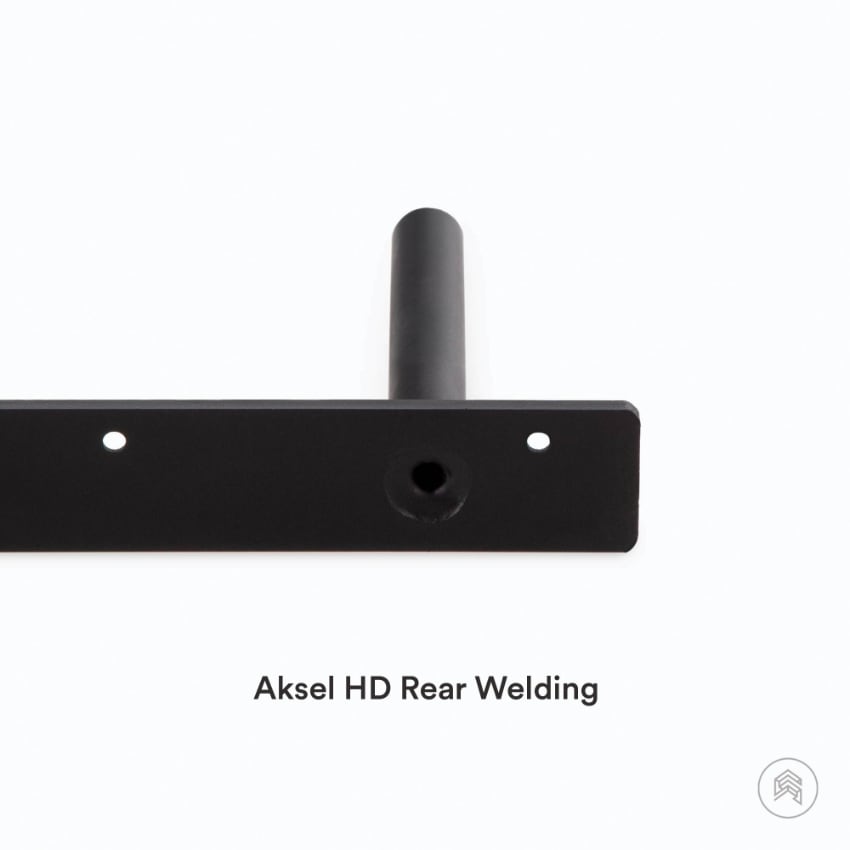
Solid, heavy-duty brackets that are just under the length of your shelf. Look for brackets that have multiple rods added as the bracket gets longer. These brackets are quite specific to the job, which requires them to have a flat plate that mounts to the wall and horizontal rods that project out and do the supporting.
For a bracket to work right, the rods need to be strong enough to support the shelf and everything on it, yet still small enough to disappear completely when the shelf is installed over them.
Of course, we are partial: Our Aksel line of floating shelf brackets features beefy 1/4” thick solid-steel construction and rods that are recessed into the backbar and 360-degree welded on the rear of the bracket (rather than front-facing welding which would further undermine the integrity of the construction). Only settle for a tried and true heavy-duty bracket if you want to build floating shelves that will stand the test of time.
How are floating shelf brackets concealed behind the floating shelf?
It is all about how the shelf is milled (the space for the bracket is carved out of the back of the wood slab to hide the bracket). Imagine the shelf as a glove and the bracket as a hand. The glove slides snuggly over the fingers and covers everything. In the same way, the shelf covers the bracket and rods, leaving just the backside of the bracket exposed.
When you are ready to install your shelf, you install the bracket first, then slide the shelf over the bracket. Once they are together, the bracket disappears from sight and presto! Now you have a magically "floating" shelf.
Can a floating shelf hold books?
Absolutely—as long as the floating shelf is properly installed and made of the right materials. Some of the most popular floating shelves on Etsy and Amazon are made of particleboard or MDF and fastened to the wall using lesser materials. Floating shelves made from these kinds of unworthy materials would certainly NOT be suitable for anything heavy (like your precious library).
The key to holding weight is 1) attaching the shelf to wall studs and 2) the support rods inside of the shelf. Without proper support, your shelf, be it made of MDF or hardwoods, will not hold itself up, let alone the book collection you’ve so carefully cultivated. Make sure to choose the right bracket for your shelf depth and thickness, and for the desired weight capacity.
Our Aksel HD floating shelf bracket can float out to 12” deep (bookcases are standard 10” depth) and have 45lbs of weight capacity per rod, making it a great choice for a big book collection.
Can I put my TV on a floating shelf?
Yes! But how big is your TV? The magic of floating shelves is all about the mysterious physical relationship between weight and leverage. If your TV is too heavy, the shelf is too shallow, or the support rods aren’t correctly installed, you’ll be out a TV. Make sure you’ve got proper support, and you’ll be good to go!
Deeper floating shelves require bigger brackets, and they aren’t always hidden. Our Yuri floating desk and Drake countertop brackets are a great place to start. They leverage the strength of your stud in the wall to get you greater depth for something like a TV set to float on.
What is the best wood for floating shelves?
Answer: any solid hardwood will do. Some good options include walnut, maple, oak, alder, or mahogany. By far, walnut is our most popular seller. Most of our woods are also available “rough cut,” which simply means that they have a more rustic, imperfect quality to them.
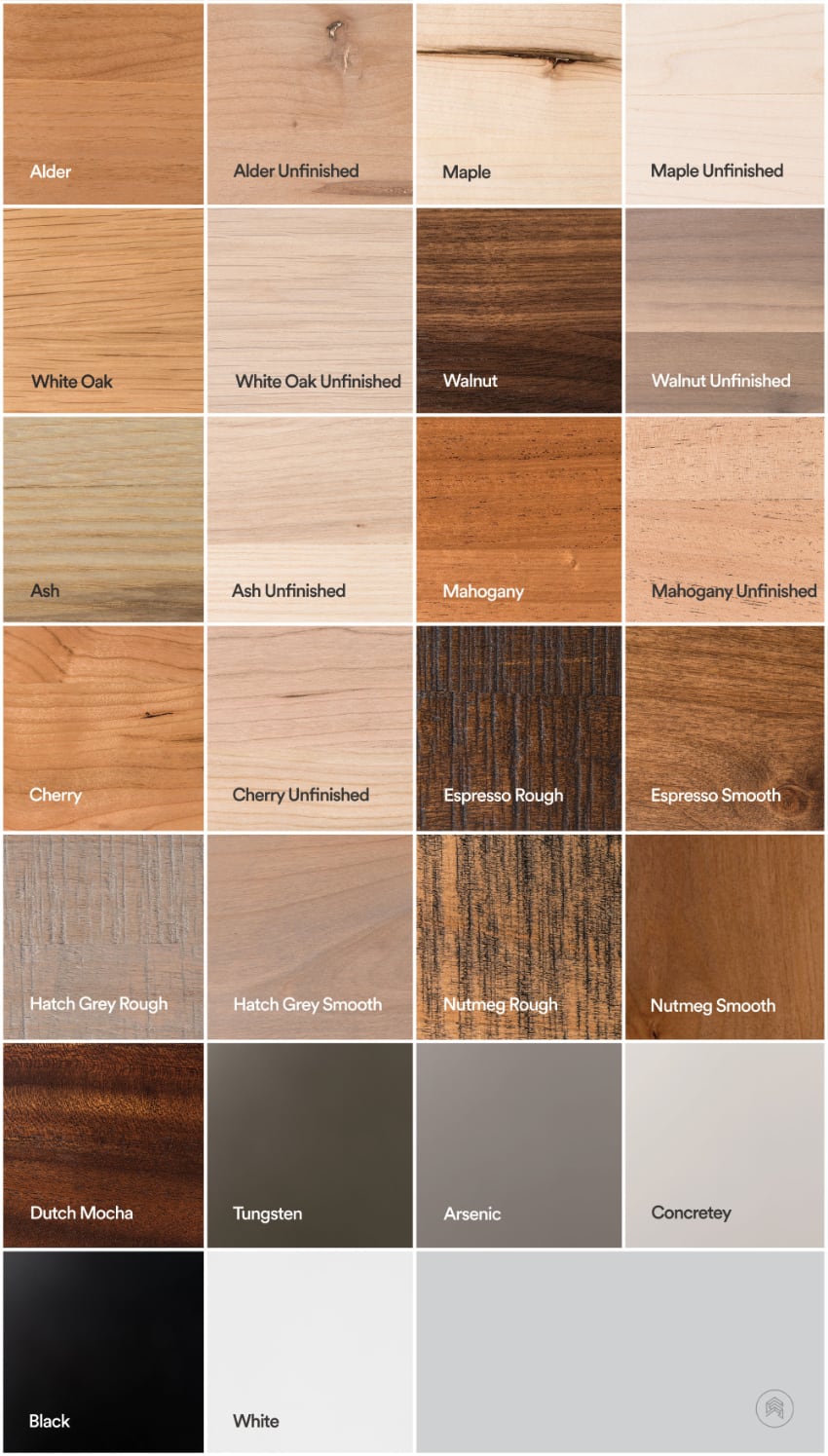
Do you sell the wood shelf slab or do I have to make/buy my own?
Heck yes, Napoleon! You obviously could make your own shelf, if you must. But if you want to save yourself time and effort, we will be happy to make you a turnkey, ready-to-hang, heirloom-quality floating shelf that is custom-made to your specific tastes. And we do it dang fast to boot!
A great ready-made option is our complete Aksel Floating Shelf system. Another awesome option is the Glenn Floating Fireplace Mantel. Whether you are building shelves or mantels yourself and need hardware and advice or if you are shopping for a complete floating shelf solution, our excellent team of Shelf Monkeys has you covered.
Floating Shelf Style Guide: Tips for Styling and Decorating Floating Shelves
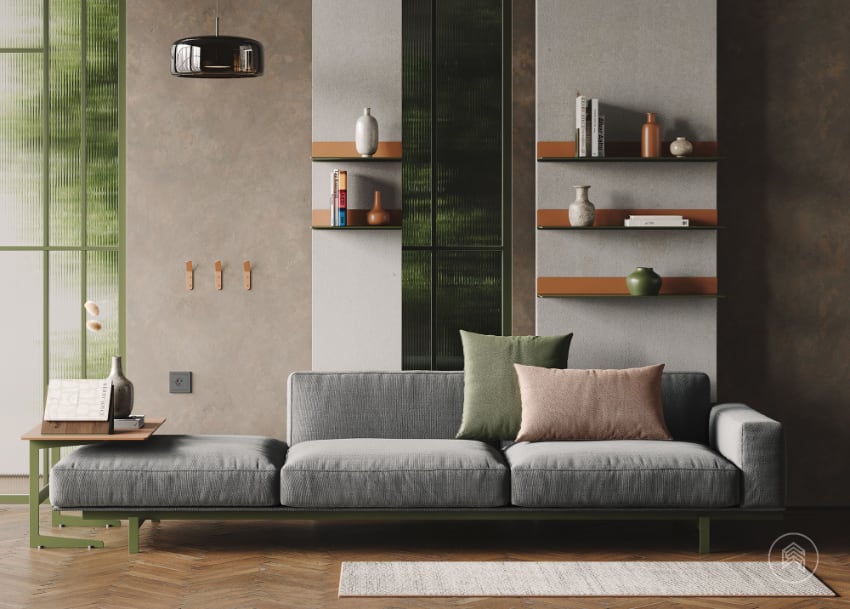
How should I decorate my floating shelves?
This is a tough one! After all, you’ve either purchased or made something awesome, meant to enhance your space. Let your floating shelf decor speak to your style and bring out the best in your room! Try not to clutter your shelves. Also, we suggest layering objects of different heights and textures to create some variety, which is aesthetically pleasing.
What should I put on my floating shelves?
It's usually a good idea to leave some space at either end of your shelf to avoid a “crowded” look. And don’t be afraid to think out of the box! A floating shelf is more than just storage. It is a magical place where you can display your family photos, mint-condish Detective Comics #27, your coveted 1978 Special Edition Star Wars Villains action figure set, or that original 1959 Barbie that you’ve been dying to proudly display. Let your freak flag fly!
What wood-finishing options are available for floating shelves?
We offer both finished and unfinished wood options. Take one of our beautiful hardwoods home in a Clear Satin finish to let its natural color and beauty shine through. Or choose one of our ultra-modern black or white painted finishes. Mahogany, nutmeg, espresso, and hatch grey stains are also available in either regular or “rough cuts” for a more rustic look.
All of our hardwoods are also available “unfinished” for a softer look. Unfinished shelves are ready to be painted and stained right out of the box using the color of your choosing.

